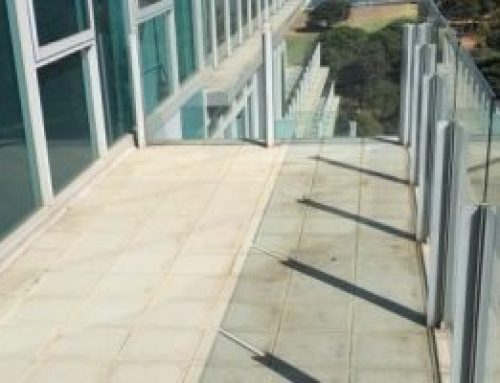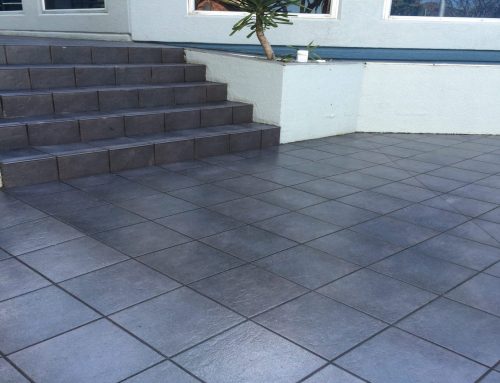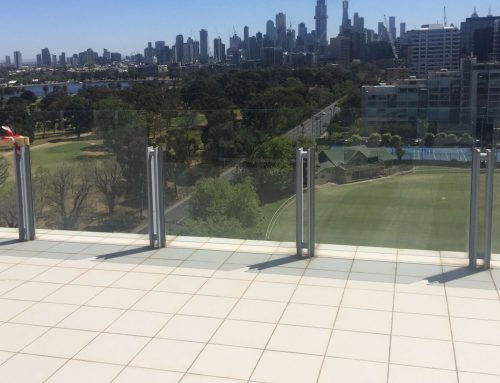In this article we will discuss, not only what an expansion joint is, but how it should be applied to your balcony.
So what is an expansion joint?
An expansion joint is a line on your balcony not filled with grout, but with a material that allows for some expansion in the joint for when tiles heat up and expand and then contract.
The Australian Standard defines these joints as: “…Discontinuities in the tiled surface, filled with permanently deformable material, which are intended to perform the following functions:
- (a) separation of the tiled surface from fixed elements such as columns, walls etc;
- (b) subdivision of large areas of tiled surface into smaller sections to compensate for induced strain from various sources; and
- (c) to interrupt the tiled surface to match discontinuities in substrate such as construction joints, movement joints etc.”
The expansion joint must be created using a sealant that is a silicone or polyurethane product, and not the lesser quality caulking products (acrylic latex or siliconised latex) which dry hard and do not allow for permanent flexibility.
Why are expansion joints important for tiling?
The reason they are so critical for tiling is that without them, especially on floors subject to sunlight, most installations which otherwise appear to be well done can sometimes fail.
Without enough room for the tile assembly to expand, the tile will pop up or “tent” most times in the middle of the floor. This situation can occur in both commercial as well as large residential jobs, so none of them are exempt from this requirement.
How many expansion joints should I have?
The Australian Standard recommends “Intermediate movement joints” be inserted in exterior floors where any dimension exceeds 4.5m centres.
They should be provided in evenly spaced positions at approximately 4.5m centres, or at locations where stress might be reasonable be expected.
They should also be inserted at the perimeters of balconies, where the tiling abuts restraining surfaces such as perimeter walls, columns or steps.



